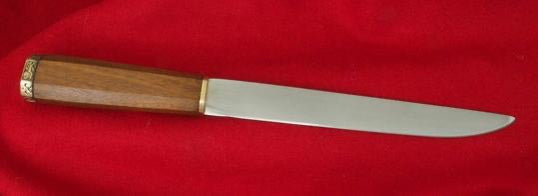"There is no man worth a leke, be he sturdy, or be he meke, but he bear a basilard." So goes a satirical song from the reign of Henry V. Daggers were the constant companion of men, and many women, in medieval Europe and, though there are many coffee table books with photographs of swords and daggers, it is often difficult for folks to identify authoritative texts on these topics.

It is particularly challenging to find texts with analytical content. In this blog post we continue our series on 'must read' sources for learning about medieval weaponry. We have published previous articles pointing the reader toward expert work on polearms, and on medieval swords. As in those posts, the goal here is not to provide a comprehensive bibliography, but rather to make accessible a brief reading list that we think will allow the aspiring scholar of European arms and armor a reasonable foundation from which to expand their knowledge. Some of these texts are widely available, some you will have to find in a library. All of them contain in-depth work on medieval European daggers that you will not find poking about online. So, read on dear scholar to discover our favorite expert sources, along with pictures of some of our historical replicas.
1. "The Metropolitan Museum of Art Catalogue of European Daggers, Including the Ellis, De Dine, Riggs, and Reubell Collections" 1928. by Bashford Dean.

An evolutionary diagram of European dagger types.
Bashford Dean was the chairman of the Committee on Armor at the Metropolitan Museum in New York. As such, he was one of the people responsible for gathering together what eventually became one of the most extensive and important collections of European arms and armor outside of Europe. This collection contains thirteen substantive chapters that discuss the development and variety of European daggers, more or less chronologically, as illustrated in the collections at the Met. These chapters include, among others, sections on basilards, roundel daggers, eared daggers, cinquedeas, Landsknecht daggers, dirks, and more. Each chapter gives a descriptive outline of the style of dagger, its history, and geography.
The second half of the book contains high quality photographs of the weapons described in the chapters. Being nearly a century old, aspects of Dean's work must be taken with a grain of salt. For example, the diagram above depicting the development of European dagger forms is representative of many efforts to understand cultural and artifact development along Darwinian lines. Evolutionary thought was being applied to most human and social sciences at the time, and it is unsurprising that Dean should attempt to develop such a scheme. It is also an approach that is rather unsuited to thinking about many aspects of material culture since daggers do not, in fact, develop through natural selection. It is usually considered much more accurate today to compare differences and similarities between various items, rather than trying to fit them into a developmental tree. One of the most useful features of this book are the drawings of details of the weapons described, and research from period art such as that I have included below.


2: "Daggers and Fighting Knives of the Western World, from the Stone Age till 1900"1968, by Harold Peterson.
Peterson's contribution to the scholarship on European daggers from the medieval and Renaissance periods is much more likely to be available to the contemporary reader. It is a slim volume, but full of useful information. Peterson self-consciously positions his research as following up upon, and bringing current (for 1968) the earlier work of Dean, making it particularly useful for the student who has already read the text we recommended above. This text covers a longer time period than Dean's, with information spanning from the Stone Age to the 19th century. One of the strengths of Peterson's account is in giving a fairly comprehensive overview of European daggers, at least enough for readers to come away with a broad understanding of the major types, and when they were prominent. That being said, his assertions as the various functions of many daggers can be somewhat misleading according to modern understanding of medieval and Renaissance fighting techniques.
3. "Knives and Scabbards: Medieval Finds From Excavations in London" 1987, by Cowgill, de Neergaard, and Griffiths.




Nathan Clough, Ph.D. is Vice President of Arms and Armor and a member of the governing board of The Oakeshott Institute. He is a historical martial artist and a former university professor of cultural geography. He has given presentations on historical arms at events including Longpoint and Combatcon, and presented scholarly papers at, among others, The International Congress on Medieval Studies.
Craig Johnson is the Production Manager of Arms and Armor and Secretary of The Oakeshott Institute. He has taught and published on the history of arms, armor and western martial arts for over 30 years. He has lectured at several schools and Universities, WMAW, HEMAC, 4W, and ICMS at Kalamazoo. His experiences include iron smelting, jousting, theatrical combat instruction and choreography, historical research, European martial arts and crafting weapons and armor since 1985
